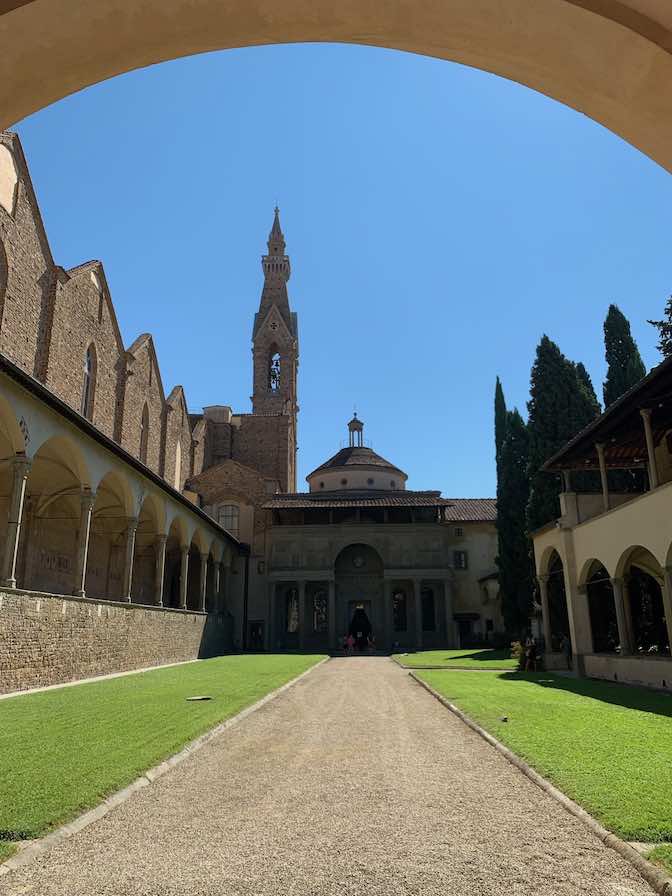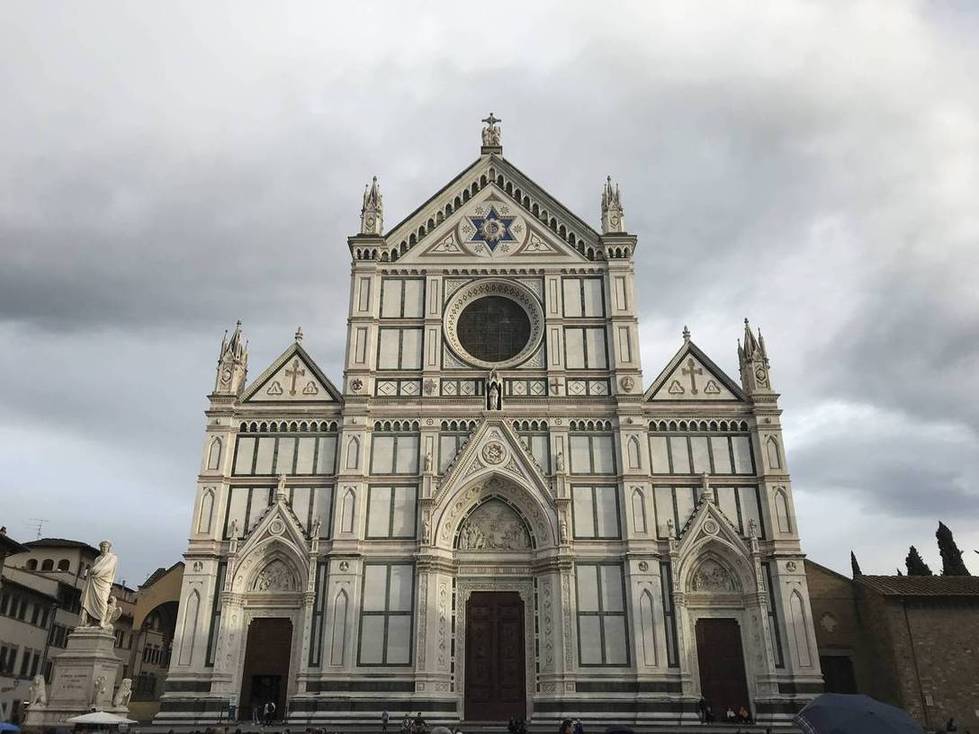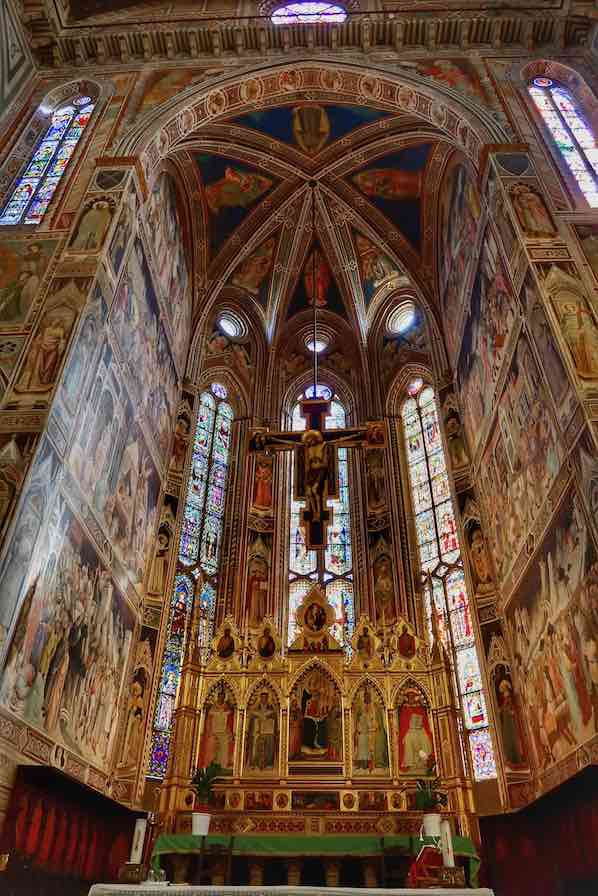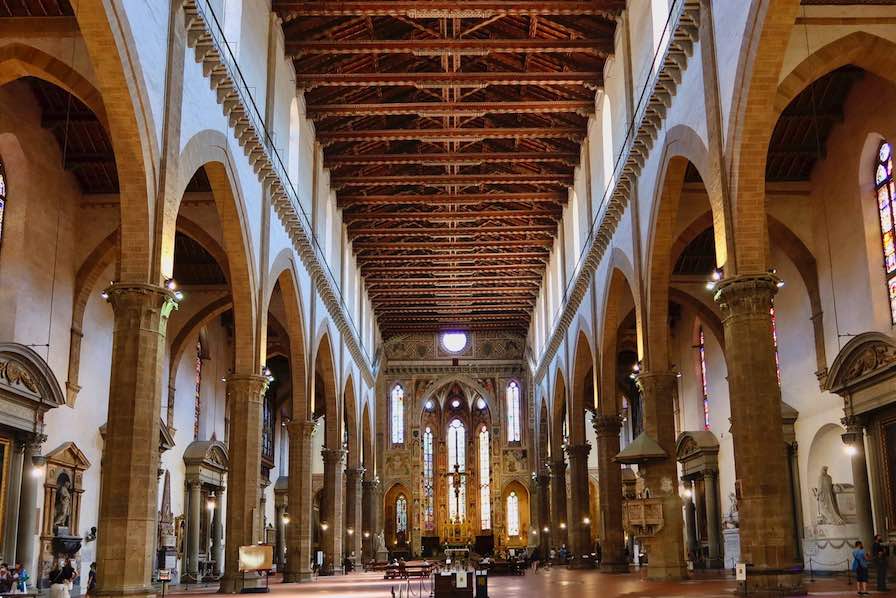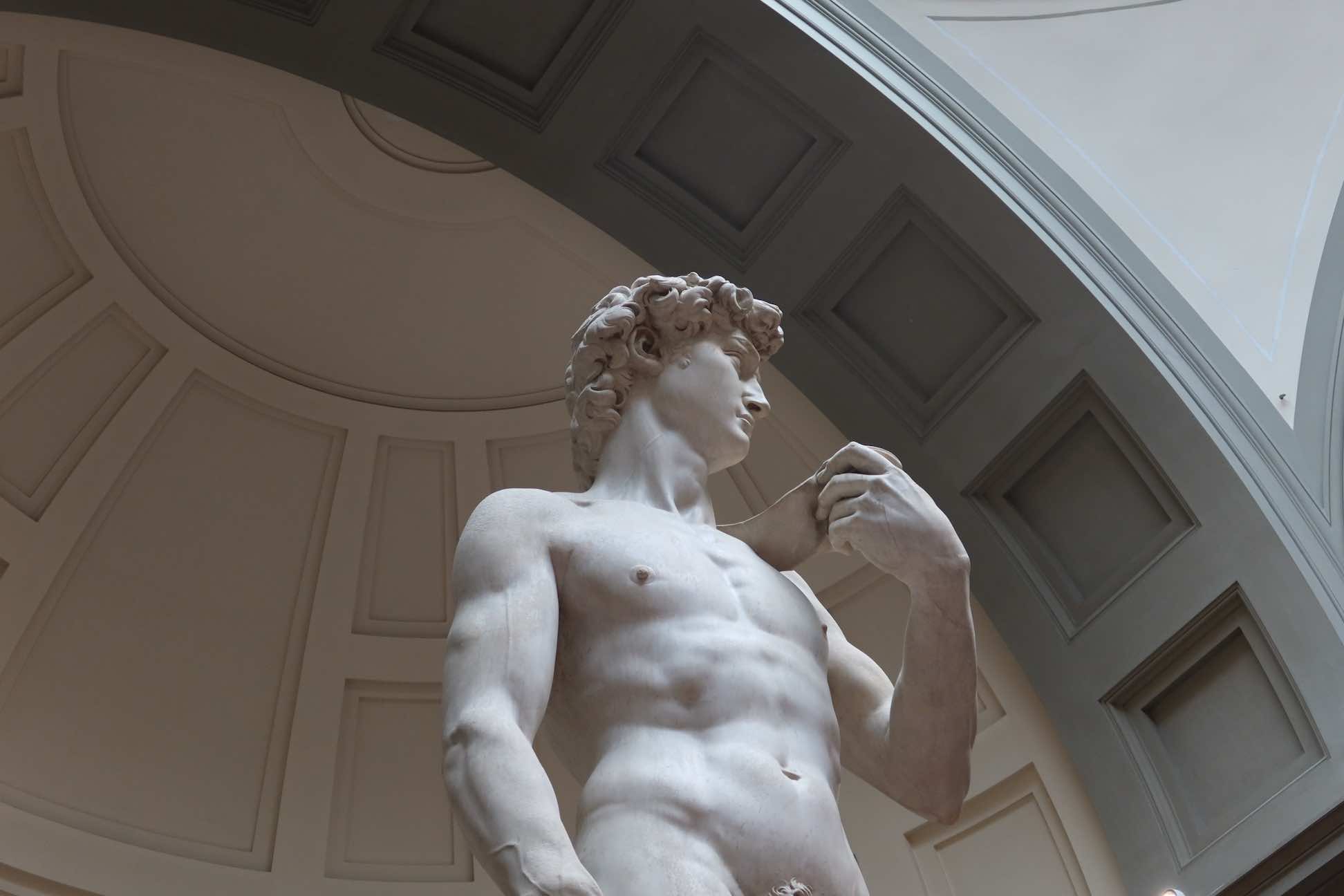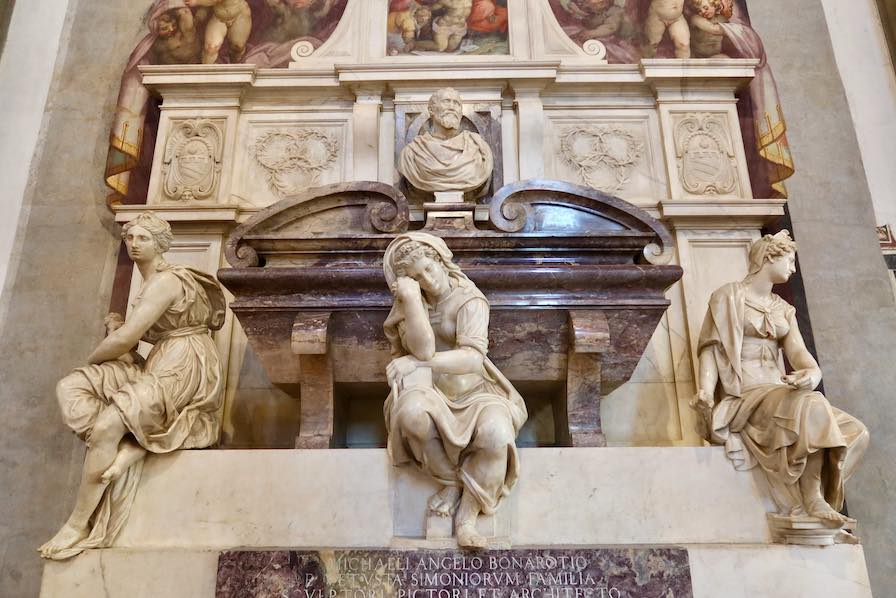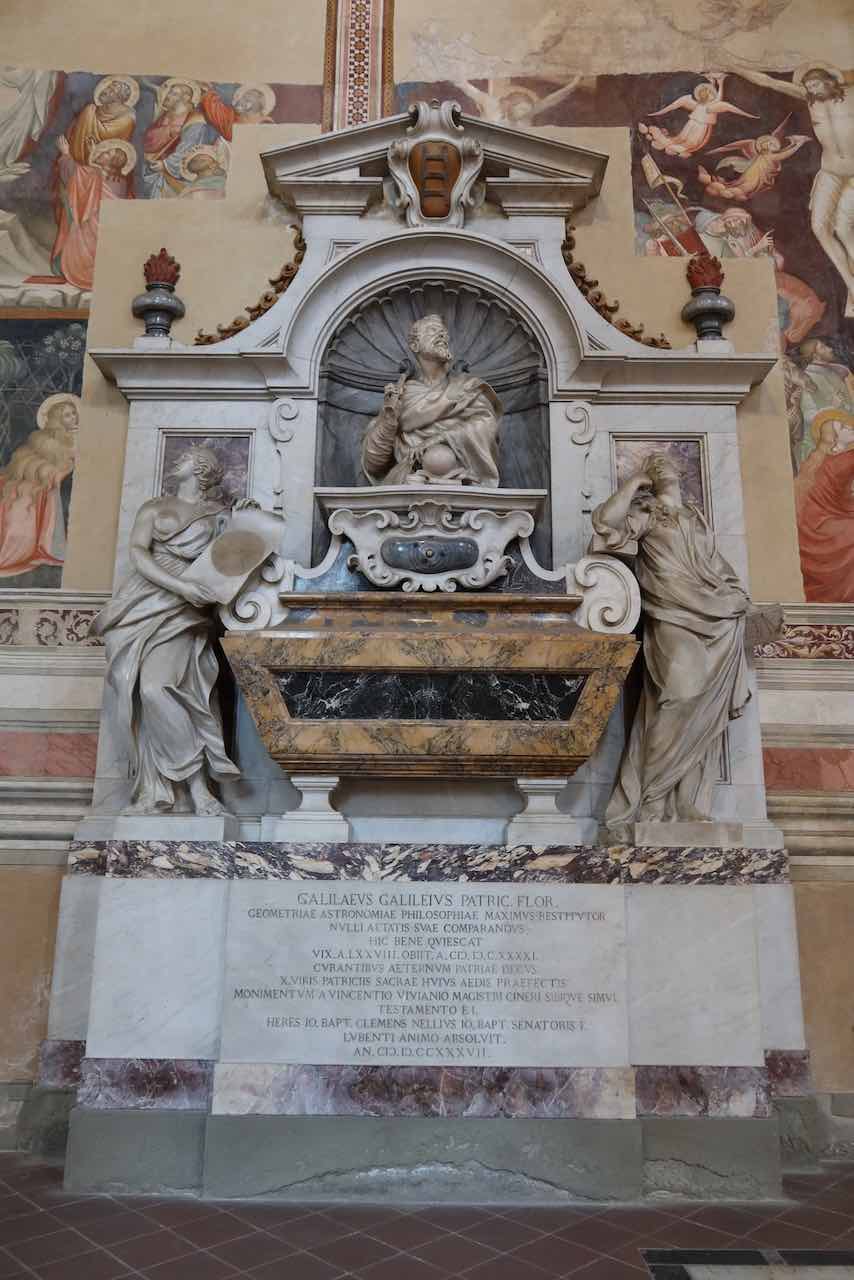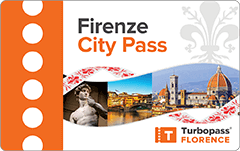- Sign up & get a FREE ebook Subscribe Today!
- Florencewise Home Page
- What to do in florence
- Santa Croce
Santa Croce in Florence - How to visit this special church
The church of Santa Croce in Florence, Italy is special for many reasons, not least of which is that it is the final resting place of Renaissance master, Michelangelo.
Read on to find out how you can visit this stunning church, and learn what you should not miss once you go inside.
Visiting Santa Croce in Florence - Everything you need to know
Florence is a city filled with world-class museums and galleries, opulent buildings and, of course, lots of interesting churches.
Even compared to the other amazing sights in Florence, for many locals and tourists alike, the Basilica of Santa Croce is a very special place.
I can safely say is one of my favorite churches in all of Florence!
Let’s take a closer look at Santa Croce and see why you need to visit the complex, including:
- A brief history of the Santa Croce basilica
- The architecture of Santa Croce Florence
- Special things to see inside the Santa Croce church
- Burials in the Basilica of Santa Croce
- Opening hours and mass times
- Where Santa Croce is and ticket information
A brief history of Santa Croce Florence
Located in the center of Piazza Santa Croce, named for the church, Santa Croce emerges right away with a grand facade of indisputable beauty, almost as if it was a backdrop to a monumental stage.
Santa Croce is a focal point for Florence's myths and beauty, art, genius and memory.
Having played meaningful roles in crucial moments throughout Florence’s history, the church is also a burial site for illustrious Florentines, great Italian historical figures, and national heroes.
With close to four thousand different works of art, Santa Croce marks a crucial point in Florence's extensive past and serves as an important gathering location for those advocating for culture and art, religious enthusiasts.
But how did it become so important?
Early history of Santa Croce
Early in the 1200s, the man who would become known as Saint Francis started on his journey to becoming one of the most famous Christian saints and founding the monastic order of the Franciscans.
A group of his brothers settled in Florence, on land next to the Arno river, slightly apart from the city center, building a small church for them to worship in.
The Franciscan churches proved very popular, and the first church was quickly outgrown.
A second church was built on the same spot later in the 12th century, but that too was not suitable for the followers of Franciscan rule gathering together.
A much more significant complex was therefore designed, with work starting in 1294-1295 (there is some dispute over the exact date) on what would become the church complex we can admire today, which is still the largest Franciscan church in the world!
Later renovations and additions
Over the next 300 years the basilica was extended and updated, such as the ancient cloister being combined with a chapter house.
By the mid 16th century hundreds of years of somewhat haphazard design updates had left the interior of Santa Croce jumbled and confused.
Duke Cosimo de Medici commissioned famed Florentine Renaissance artist Giorgio Vasari to update and renovate many of Florence's churches, like Santa Maria Novella, and Santa Croce did not escape his attention.
Vasari streamlined the interior of Santa Croce by creating fourteen new symmetrical side altars leading you towards the high altar.
While his work was architecturally more pleasing, in the process of renovating the basilica, some of the early chapels and frescoes were destroyed or covered up, including the fresco cycle of the life of St Francis in the Bardi Chapel.
Modern history
Following the renovations, Santa Croce became even more popular with Florentines.
It became quite the honor to be able to be buried here!
In the late 1800's the façade was finally finished, making Piazza Santa Croce an even more impressive spot in Florentine life.
After World War II ended, the area beneath the sacristy was dedicated to the memory of the Florentines who had fought for Italy, making this 13th century church even more special to Florence.
No matter when you visit Florence, here are four things never to leave at home:
Disclosure : If you make a purchase through a link on this page, I may receive a small commission - at no extra cost to you. Thank you for supporting my site!
The architecture and interior of Santa Croce
While your eyes will likely be drawn to the amazing art on display, be sure to take a moment and admire the architectural elements in the Basilica of Santa Croce.
The marble Façade
Santa Croce for a long time remained without a real facade, with just simple walls.
What we see today was built relatively recently; in the decade between 1853 and 1863.
The project and design were entrusted to an architect named Nicola Matas, who was inspired by the facades of the cathedrals of both Siena and Orvieto, which are archetypes of the Gothic Italian Style.
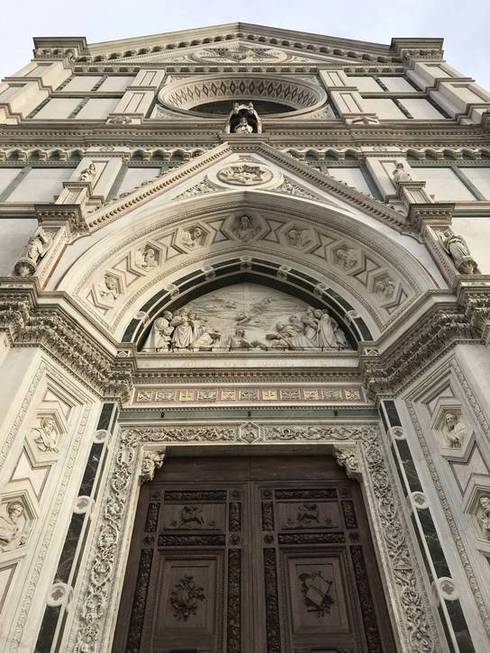 Take some time to appreciate the details on the facade of Santa Croce, each part was placed there deliberately
Take some time to appreciate the details on the facade of Santa Croce, each part was placed there deliberatelyIn the upper part of the neo Gothic facade, right in the center of the large triangular register (tympanum), there is a large star of David.
Matas was Jewish and so the theory is he wanted to insert the star because of his beliefs.
But in the core of the facade, you can also see he added the monogram of Christ, suggesting the continuity between the Old and New Testaments of the Bible.
Matas was buried right in the churchyard of the basilica, in front of the main door, in recognition of his contribution to this church.
The central space
The atrium (main hallway) is spacious and bright, with three naves, and the interior of the church is shaped like an Latin cross.
The central nave is the widest at more than 34m/112ft high and 20m/65ft wide, with pillars supporting spiked arches and exquisitely frescoed ceilings.
The fourteen large altars added by Giorgio Vasari at the request of Cosimo di Medici in the 16th century were arranged along the naves, inspired by the Pantheon in Rome.
Those same altars would go on to house the tombs of illustrious scientists, famous artists and writers such as Michelangelo, Galileo and Nicholas Machiavelli.
The vestry/sacristy
Santa Croce holds one of the oldest monumental sacristy in Florence.
The function of this room was originally that of a meeting room for the Franciscan friars who lived in the complex, before becoming the place where the vestments were kept ready for when the men needed to change before services.
The ceiling and walls were originally painted with fake marbles and on the eastern wall there were splendid frescoes depicting a crucifixion.
Over the centuries, this area also changed its appearance several times.
In 2013, the famous Crucifix by Cimabue, which hangs from the ceiling, was transferred there.
Corridoio del Noviziato
In English 'Corridor of the Novitiate', this name comes from the original function of this corridor, which was to connect the church, the Medici chapel (not the famous Medici Chapels!) and the dormitory for the novices.
The access to the corridor is through a 15th century door, located all the way down to the left of the church, crossing the nave.
The curious thing about this room is that the floor is covered with white marble tombstones.
A staircase inside the convent connects this area with the rooms overlooking the cloisters.
The Cloisters
During a visit to Santa Croce I can highly recommend taking a look at its two cloisters, with the first cloister being most interesting.
The earliest cloister was built when the complex first started, and is known as the 'cloister of the dead' because it also served as a cemetery.
In the 19th century it was once again used to commemorate the dead, with funerary monuments and memorials once again allowed in the cloister.
Most of these were then removed to a different space in the complex in the 1960's when the cloister was being renovated, except for a few specific monuments like Francis William Sargant's commemoration to Florence Nightingale.
The first cloister of Santa Croce is also home to the Pazzi Chapel, known worldwide as to be one of the most representative pieces of Renaissance architecture.
The Pazzi Chapel was designed to be both a family chapel and the chapter house, with Filippo Brunelleschi (who also solved the issue of how to build the dome on Florence's cathedral) designing the structure.
the Cenacolo or Refectory
This large room served as a dining hall originally, but during the 19th century, the refectory was used as a carpet factory, a warehouse and, finally, to store works of art.
In the year 1900, it was officially designated as the first location of the soon-to-be Museum of Santa Croce.
From an artistic point of view, it’s always been the home of some of the most important attractions of the whole complex.
the Crypt and Underground area
The areas under the transept and the sacristy served as a burial ground and occasionally as a temporary headquarters for other religious brotherhoods, and they stayed this way for a long time.
During the 20th century the crypt became a memorial to the fallen, eventually becoming a shrine in honor of the two world wars called the Famedio.
Take a look at these pages to find out how to make the most of your time in Florence:
Special things to see inside the Basilica of Santa Croce
There are a wide range of things to see inside the basilica, here are some of my favorite art treasures on display:
Pazzi Chapel
The Pazzi chapel is the home of a number of beautiful elements, in particular the terracotta likenesses of the Apostles by Luca della Robbia.
There are also two intricate stained glass windows and other frescoes to admire.
Peruzzi chapel
The Peruzzi chapel is dedicated to Saints John the Baptist and John the Evangelist and the Peruzzi family commissioned Giotto to decorate it in the 1300's.
Giotto painted the chapel with frescoes showing scenes from the lives of the two saints on the Peruzzi chapels walls in intricate detail.
Bardi chapel
Giotto was also commissioned around 10 years later to decorate another one of the churches main chapel, the Bardi chapel.
This one is dedicated to St Francis, with the Giotto frescoes Stories of St Francis telling the tale of the famous saint, and also has some lovely stained glass window above the arch.
Cimabue's Crucifix
This ornate wooden crucifix dates from the late 13th century, and despite being damaged in a severe flood which hit Florence in 1966, still invokes a feeling of wonder when seeing it in person.
Originally displayed in the main part of the basilica, it is now hung in the sacristy.
Agnolo Gaddi's Legend of the True Cross
Found in the Chancel chapel, this massive fresco tells the story of the True Cross, the wood used for the holy cross of Christ.
Originally completed in the late 1300's, the fresco was restored in the early 2000's and looks outstanding now!
Taddeo Gaddi's Last Supper
Taddeo Gaddi worked with Giotto for years, and was an extremely talented artist.
On the back wall of the refectory he created this incredible scene of the Last Supper and Tree of Life, with St Francis and other important members of the Christian church.
Who is buried in Santa Croce?
Early burials in Santa Croce
When the church was first being used by the followers of St Francis, the concept of cemeteries did not really exist in the way we understand them today.
Instead, members of a congregation were laid to rest in spare spaces in churches, monasteries and convents in floor tombs.
In order to remember and commemorate the people who had passed on, tomb slabs were added to the floors and walls of the church, ranging from large and ornately decorated slabs to small, simple versions for the floor tombs.
In Santa Croce it is estimated there were once over 1500 different tomb slabs present, but as a result of various renovations over the centuries and the switch to larger cemeteries for burials, today there are only 250 still visible.
Monumental Tombs
When Cosimo de Medici ordered that the basilica of Santa Croce be renovated, he also asked the architect Vasari to design a tomb fit for the Florentine master, Michelangelo.
After Michelangelo's tomb was unveiled, it became popular for famous Italians and Florentines to choose to be buried or honored in Santa Croce, leading to some truly stunning monuments for us to admire today!
Some of the most interesting and famous tombs are:
Monumental Tomb of Michelangelo Buonarroti
When Michelangelo died in 1564 in Rome, Cosimo de Medici announced that while he couldn't employ Michelangelo during his lifetime, he would instead ensure that the famous man would be laid to rest in a magnificent tomb in Florence.
Michelangelo's tomb was designed by Michelangelo's friend Giorgio Vasari, and is a vision made of white Carrara marble, topped with a bust of Michelangelo himself.
Monumental tomb of Galileo Galilei
The family of Galileo Galilei had long had a chapel in Santa Croce, but when the famous scientist died in 1642, they were hesitant to bury him there given he had been convicted of heresy.
He was given a very small, nondescript burial in another part of the church, but around 100 years later popular opinion had shifted and a grand monument was constructed to commemorate him.
Galileo's tomb is opposite Michelangelo's in the main part of the basilica.
Monumental Tomb of Niccolò Machiavelli
 Another controversial figure in his lifetime, the monument to Machiavelli was built a long time after his death
Another controversial figure in his lifetime, the monument to Machiavelli was built a long time after his deathSimilarly, Machiavelli was buried without much fanfare in his family's chapel in Santa Croce when he died in 1527 because Machiavelli's political theory writings had put him at odds with the ruling Medici family.
Machiavelli wrote about political life and politicians, with his work dividing opinion almost immediately upon being published.
Towards the end of the 18th century there was renewed interest in Machiavelli's writings, and a more fitting monument was commissioned.
Cenotaph of Dante Alighieri
The Tuscan poet Dante Alighieri was born in Florence but was exiled following political infighting in the early 1300's.
He wrote his defining work, the Divine Comedy, while in exile and was never able to return in person to his beloved home city due to an outstanding death warrant that was only officially rescinded in 2008!
 This tomb was built in anticipation of the return of Dante's body, which Florence is still waiting for.
This tomb was built in anticipation of the return of Dante's body, which Florence is still waiting for.Dante Alighieri died in Ravenna in northern Italy, and was buried there, but in later years the Florentine authorities made repeated attempts to reclaim his body.
All attempts failed, and Dante's tomb remains in Ravenna, but a grand tomb was built in Santa Croce ready to house his body if this situation ever changes.
It is one reason you will see a statue of Dante in front of Santa Croce.
The statue, sculpted by Enrico Pazzo, was erected in 1865 on the 600th anniversary of the poet's death.
Santa Croce opening hours and mass times
Santa Croce Complex opening times
Monday-Saturday: 9:30am-5:30pm (last admission 5pm)
Sundays and religious holidays: 12:30pm-5:45pm (last admission 5pm)
Closed on New Year's Day, Easter, Feast of St Anthony of Padua (June 13), Feast of St Francis of Assisi (October 4), Christmas Day and St Stephen's Day (December 26).
Mass times
Visitors wishing to attend Mass, confession or for private worship may enter for free during the opening times noted above.
Follow the signs for the separate entrance, you will not be able to access the full complex once inside.
Mass is held at 6pm every day, with an additional mass at 11am on religious holidays.
Confession is possible every day between 10am-12pm and then again from 4pm-6pm.
The recital of the rosary is held Monday-Friday at 5:30pm and there is a daily prayer in front of Donatello's crucifix at 3:30pm.
🤙 Roaming in Italy? 📱
Get yourself an Italian eSIM for calls, messages and data when traveling here.
Save on data charges with plans from just 19€ from Holafly - our recommended eSIM provider - click here to find out more.
Santa Croce Florence - Location and ticket information
The basilica of Santa Croce is centrally located in Florence, and can easily be reached on foot from pretty much anywhere in Florence.
You can walk from the Santa Maria Novella train station in around 20 minutes.
It's only a 10-minute walk from the Duomo, or you can take one of the small electric buses that navigate Florence's medieval city center.
Ticket information
While you can purchase entrance tickets on site, I would always recommend booking your tickets online in advance to avoid any unnecessary queuing.
You do not want to miss its incredible treasures!
Florencewise's Top Travel Resources
Ready to book your trip to Florence? Take a look at these helpful links to companies we use and trust:
- Keep your travel spending simple with the Wise card, which removes all the worry about exchange rates and high transaction fees all over the world
- Search for and book your perfect accommodation
- Our complete guide to what to pack for Florence
- The number one travel accessory, a multi-point travel adapter and voltage converter
- Browse a huge range of tours in Florence and beyond
- Experience unique tours and special access to Florence's most popular sights
- Protect yourself with comprehensive travel insurance
Within this post there are some affiliate links for products and services. For more details about our affiliate policy click here.
Receive the latest Florence news, travel tips, insights and more!
Simply sign-up today for our free newsletter:
We are committed to respecting your data. Click for our Privacy Policy.
Comments? Questions? Suggestions?
Please come over to the private Facebook group and join in the conversation.
You will often find me there, happy to answer your questions / comments!
You will also meet other Florence lovers and experts, too.
What are you waiting for?


